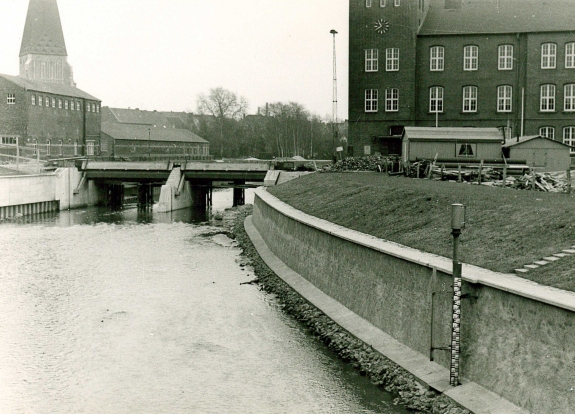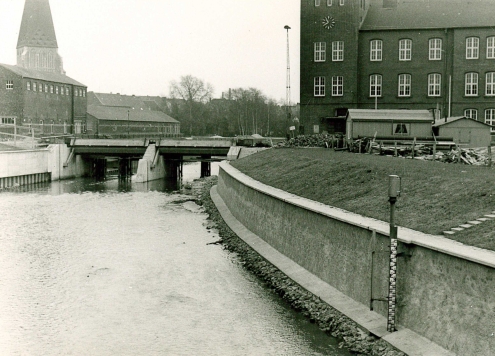Photo of the month - February 2023
The city lock
For centuries, high water and flooding have been a serious threat to life and limb and to property for the inhabitants of Bocholt. On 15 February 1605, for example, the town fathers sent out six people and called out the neighbours to secure the Lohmühle mill and to operate the lock. On 4 February 1745 the town clerk noted: "an die schlüsen arbeittloite gehabt, dass sie die eißschollen von einanter stoßen".
It is certainly possible to find out more historical data about the town lock after a thorough study of the Bocholt town accounts. In the local history of Friedrich Reigers, it is mentioned as early as 1408, although its appearance and exact location from earlier times have not been handed down.
The chronicler goes on to write that the weir at the Binnenmühle was rebuilt from scratch in the summer of 1820 at the town's expense. The same apparently happened in 1870, when the town council approved the construction of the new lock according to the project of the district master builder Merkes. In the course of the first regulation of the Aa in 1897/98, the lock was also rebuilt at the Schanze.
This had a clear width of 15.80 metres with 2.20-metre high and 1.48-metre wide sluice gates and survived the bombing of 1945 unscathed. Since the Bocholter Aa had to be completely re-regulated in several sections due to repeated floods (1903, 1925, 1946 and 1960), the weir and the footbridge over it were rebuilt in February 1965 (photo). It was completed five months later.
The city lock to the rescue
The new city sluice was put to the test in the same year, when a hurricane-like storm with continuous rain hit the country on 9 December 1965. The Aa flooded from Rhedebrügge via Krechting to Pleystrang at Königsmühle, in some cases exceeding the normal level of three metres. In many cases, fields and meadows were flooded. Although a flood warning was issued in the city area, no flooding occurred here.
The water of the Aa had an unimpeded flow when the sluices were fully open. This was seen as a success of the Aa regulation carried out so far from the west to Bismarckstraße, which had thus paid off in the inner city area. Currently, the preservation of the city lock is under discussion, as the construction has been in need of renovation for some time.




